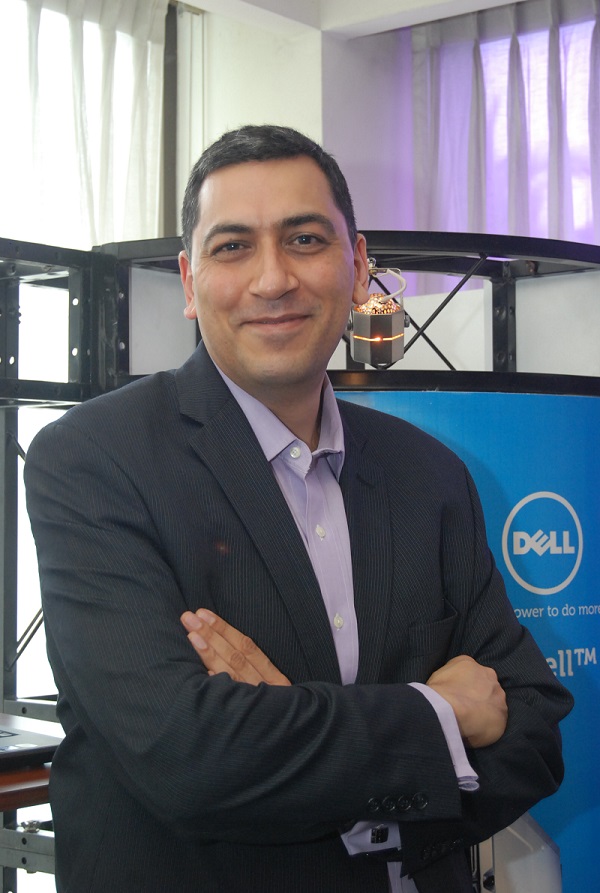Dell ‘in it to win it’ with channel partner strategy
By Gabey Goh April 27, 2015
- The traditional vendor business has been undergoing an upheaval
- US tech giant believes the time is right for it to swoop in with its partners

DELL Inc looks to be the last man standing in the end-to-end solutions vendor space, with its traditional rivals having undergone fundamental changes in business models and strategies.
Hewlett-Packard Co (HP) is in the midst of splitting into two separate publicly traded companies – one focused on PCs and printers; and the other on enterprise products, services and software – with the exercise targeted to conclude by October.
In a report, research firm Gartner Inc said that the HP split does nothing to address the company’s “core challenge of finding growth, or to directly address its shortcomings in cloud, Software-as-a-Service (SaaS) and mobility.”
“In the short term, the announcements have already positively impacted HP’s shareholder value. In the longer term, reduced size and scope should enable both companies to focus and better respond to market dynamics,” the report further stated.
In terms of recommendations, the firm said that customers sold on “one HP” should evaluate the situation with care and count on differences between enterprise and PPS (Personal and Printing Systems) sales forces, contracts and discount structures.
“Ignore the ‘fear, uncertainty and doubt’ (FUD) messages expected from competitors over the next year,” it added.
Meanwhile IBM Corp sold its x86 server business to Lenovo Group Ltd in October 2014 for US$2.1 billion, as part of its on-going shift away from hardware and towards software and services.
The unit had not been faring well, with Reuters noting in late 2014 that that the low-margin server business had posted seven quarters of losses as clients move to the cloud.
The deal made Lenovo the third-largest server maker in the world, behind HP and Dell. The China-headquartered company has ambitious plans, though channel partners did highlight potential challenges in security and integration as it moves to integrate IBM’s x86 server business.
Lenovo’s EMEA (Europe/ Middle East/ Africa) vice president of products and channels Vincent Fauquenot told Channelnomics Europe that the breadth of the company’s computing offering – encompassing phones, tablets, PCs, and servers – will give it the edge over its US-based rivals.
“We are covering a breadth of product that nobody [else does],” he said. “We are working with phones, tablets, laptops, desktops, two-in-ones, entry-level servers and mid-market servers. HP doesn’t have phones, and Dell doesn’t have phones. We will keep on innovating.”
Taking advantage of the situation
 It is amidst this backdrop of major industry moves that Dell, having just completed its first full year as a private company, is aggressively positioning itself as the “reliable and predictable” provider.
It is amidst this backdrop of major industry moves that Dell, having just completed its first full year as a private company, is aggressively positioning itself as the “reliable and predictable” provider.
In an interview with Digital News Asia (DNA) during a recent visit to Singapore, Cheryl Cook (pic), its vice president of global channel alliances, had nothing but good news to share in terms of the company’s performance to date.
“Our business results has been incredibly robust. We probably haven’t seen this kind of growth in many years, so I can say that we are outgrowing the market by three to four times.
“We’re also seeing high double-digit growth across all our divisions as well,” she said, without disclosing actual figures.
Commenting on the PC segment, Cook believes the market is consolidating to the advantage of the top three OEMs (original equipment manufacturers): Dell, Lenovo and HP.
In the enterprise and server business space, Cook said that Dell is continuing to “grow in a premium to the market,” taking bites out of the market shares of HP and IBM.
“To be candid, we’re taking advantage of the competitive landscape. HP’s announcement to spilt and IBM’s announcement to divest its x86 server business has created an opportunity for Dell, and we’re getting a lot of renewed interest from customers.
“In addition, the end of support for Windows Server 2003 in July will also be creating another opportunity for us,” she added.
Key to all this is Dell’s ecosystem of channel partners. Last November, the company pledged US$125 million in partner incentives for 2015 – to up the ante with the competition and grow its storage, data centre and PC business over the next year.
The company currently has over 167,000 partners globally.
Putting partners centrestage
Cook said that for the first time in the company’s history, partners were invited to participate with customers on the first day of Dell World, its annual conference in Austin, Texas. About 650 partners made the trip.
The injection of funds aimed at beefing up its channel ecosystem includes rebates that company is paying out, described as “re-investment,” and enhanced incentives around core offerings aimed at “driving better profitability and gaining new market share,” she said.
“We’re certainly seeing momentum and share gains especially with our storage business. We think we’re being quite disruptive in the marketplace because we ship so much storage that’s going inside servers, along with external storage.
“The fact that the lines will blur with technology like flash and software-defined storage, and because we do server, storage and networking, we don’t have an artificial motivation to go either way – it should just be optimised to the platform and the workflow,” she added.
For the first half of 2014, Dell was ranked No 1 in total terabytes sold (internal and external) in the IDC Worldwide Quarterly Disk Storage Systems Tracker report.
The research firm also reported that total worldwide enterprise storage systems factory revenue grew 7.2% year-over-year to nearly US$10.6 billion during the fourth quarter of 2014.
“Being the ‘only end-to-end integrated solutions company’ gives us a lot of differentiators,” said Cook. “The leverage we can bring across to market from our solutions, and research and development, is significant.
“In addition, we’re easy to understand and do business with – and can represent and support partners as customers seek to cut down on the number of vendors they have.
“The timing is great for Dell right now – we’re committed to winning, but winning with our partners,” she claimed.
End-to-end enablement
Dell is also investing in its channel ecosystem via IT enhancements, which Cook said was to the tune of “tens of millions of dollars,” in areas such as an online configuration tools and partner portals intended to make it easier to do business.
The company is also investing in its Dell Financial Services financing arm. Its existing partnerships with GE Capital and Wells Fargo in the United States have been expanded with increased credit and extended payment terms for partners.
“We want to ease the burden of cash flow and payments for our partners while they are growing at such a rapid pace,” Cook said.
Cook said that that these financing options are available in select markets outside of the United States, including India and China.
Dell South Asia general manager Sumir Bhatia said that within South-East Asia, the company is in the process of launching these financing options with regional financial institutes.
Dell is also making improvements to its partner training offerings, with two new advanced competencies in security and storage, along with refreshed training for virtual desktop competencies.
“We’ve seen good adoption from partners in taking up software training, with certification to sell our security, data protection, and system management solutions. The partners which have done so have seen up to 25% year-on-year growth,” Cook claimed.
In addition, Dell now caters to partners which seek to focus on one specific area to differentiate themselves.
Cook said that quite a few partners don’t necessarily have to go broader with their portfolio and might want to specialise. Dell now “enables navigation through its programmes to achieve the highest earnings potential.”
 With regards to Asia, Sumir (pic) said that the company’s global partner programme is being “applied with regional and local flexibility to suit the nuances of individual markets.”
With regards to Asia, Sumir (pic) said that the company’s global partner programme is being “applied with regional and local flexibility to suit the nuances of individual markets.”
“With our channel strategy, distribution is the first key focus area for us as we expand in markets in South Asia, India and China. Increasing our reach is going to be a big deal.
“We’ve made investments around our IT, getting the right tools in place for distribution, and are also focused on further developing our ISV (independent software vendor) ecosystem to take our solutions to market,” he added.
Dell also recently launched its Dell ProSupport Plus for Enterprise, available in 60 countries, which offers a dedicated technical account manager along with remote monitoring and automated support.
“This is a predictive and proactive level of support that’s telemetry-based, which we have had for some time for our data centre customers and are now expanding it to cover end-user devices and for all enterprise customers.
“For example, Dell will call a customer before battery outage is expected to occur for servicing and partners can integrate this service into their offerings to manage the customer experience and create stickiness. Others don’t have anything like it and we use it as an example of how we are evolving our thinking and offerings to the market,” he added.
Looking ahead
Cook said that she doesn’t have an explicit target for the channel business, though she would like for growth to continue at “a premium to the market rate.”
“The thing to remember is that the whole company is growing as well, as the mix in business shifts to a higher mix of enterprise solutions with more software, for example.
“The software business is currently 60% via channel partners, as certain technologies have a bias towards purchase via channels. And we expect that this shift will grow as the mix of business evolves as well,” she said.
While globally, the channel represents over 40% of Dell’s commercial revenue, in Asia Pacific, it accounts for 50% – a percentage that is also expected to increase in the coming months.
“We’re doing everything possible to reinvest in the growth of the business,” said Cook.
“In that sense, the sky’s the limit. We’re not trying to hold ourselves back but are looking at the most optimised way to grow with our partners.
“And also, we like winning … . Did I mention that?” she quipped.
Related Stories:
Channels and IoT key pieces in Dell's Asia game-plan
For Dell, Asia is a matter of priorities
A year after privatisation, Dell reports record growth
Dell transformation to help customers transform, says senior exec
Dell ups the APAC ante with new leadership team, channel initiatives
For more technology news and the latest updates, follow us on Twitter, LinkedIn or Like us on Facebook.


